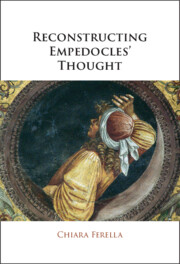This chapter turns to anatomical texts of the Classical and Hellenistic periods, encompassing all texts that handle anatomy in a sustained way, even if not exclusively. It begins by laying out three different categories of anatomical texts that will be operative across the second half of the volume: general books that include anatomy, anatomical handbooks, and anatomical procedures. It then turns to examples from the periods under study, in each case describing the texts, querying the extent to which they are reliant on dissection, and addressing their fortunes, with particular attention to the ways they were received by Galen and other anatomical authorities of the Roman period. Authors covered include Alcmaeon, Anaxagoras, Diogenes of Apollonia, Democritus, Empedocles, the authors of the Hippocratic Corpus, Plato, Diocles, Mnesitheus, Dieuches, Aristotle, the early Peripatetics, Praxagoras, Pleistonikus, Phylotimus, Herophilus, Erasistratus, Aristophanes of Byzantium, Celsus, and Pliny the Elder. It also briefly addresses anatomical passages in more literarily and philosophically focussed authors, including Callimachus, Philo Judaeus, the early Stoics, Cicero, Horace, and Seneca.
